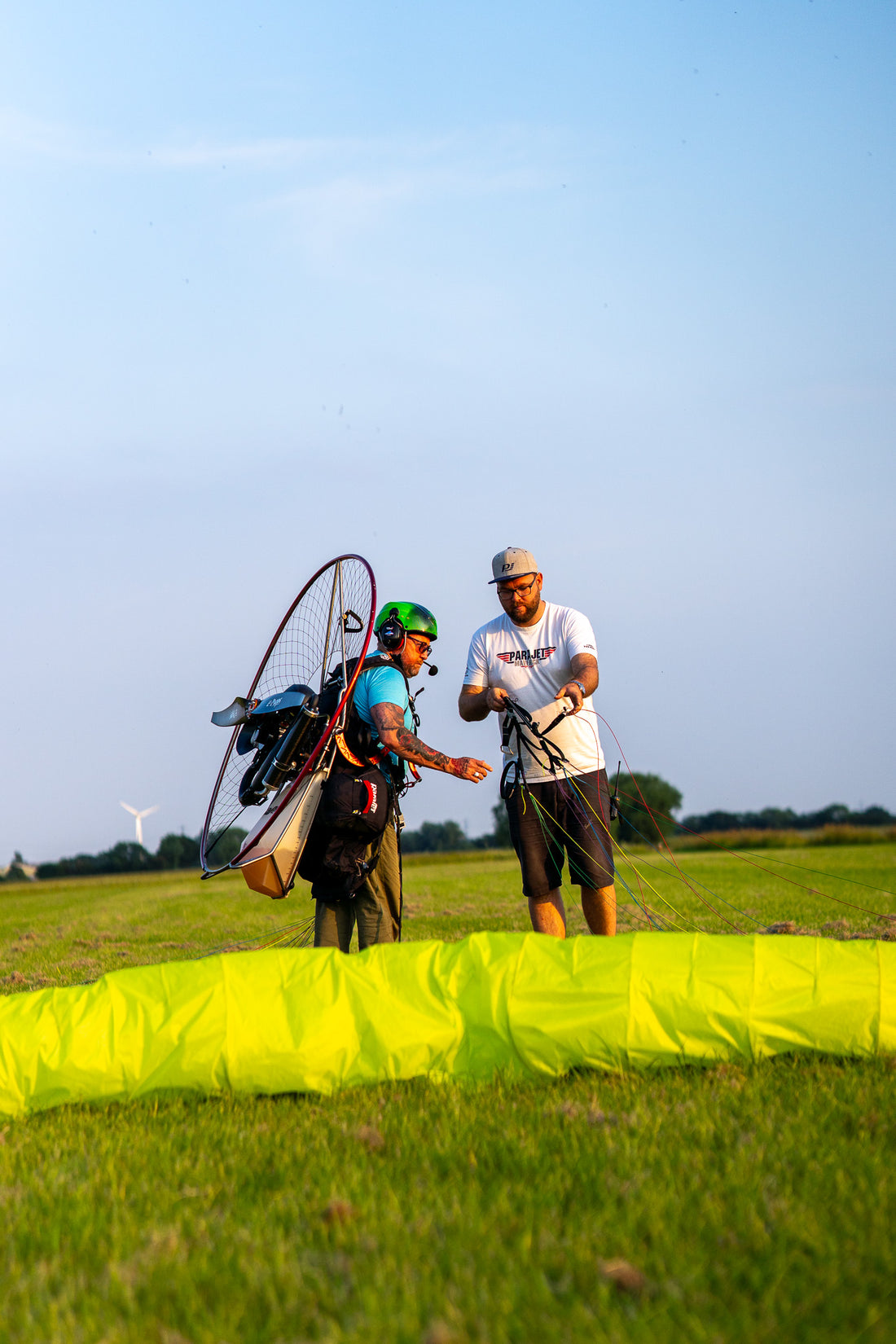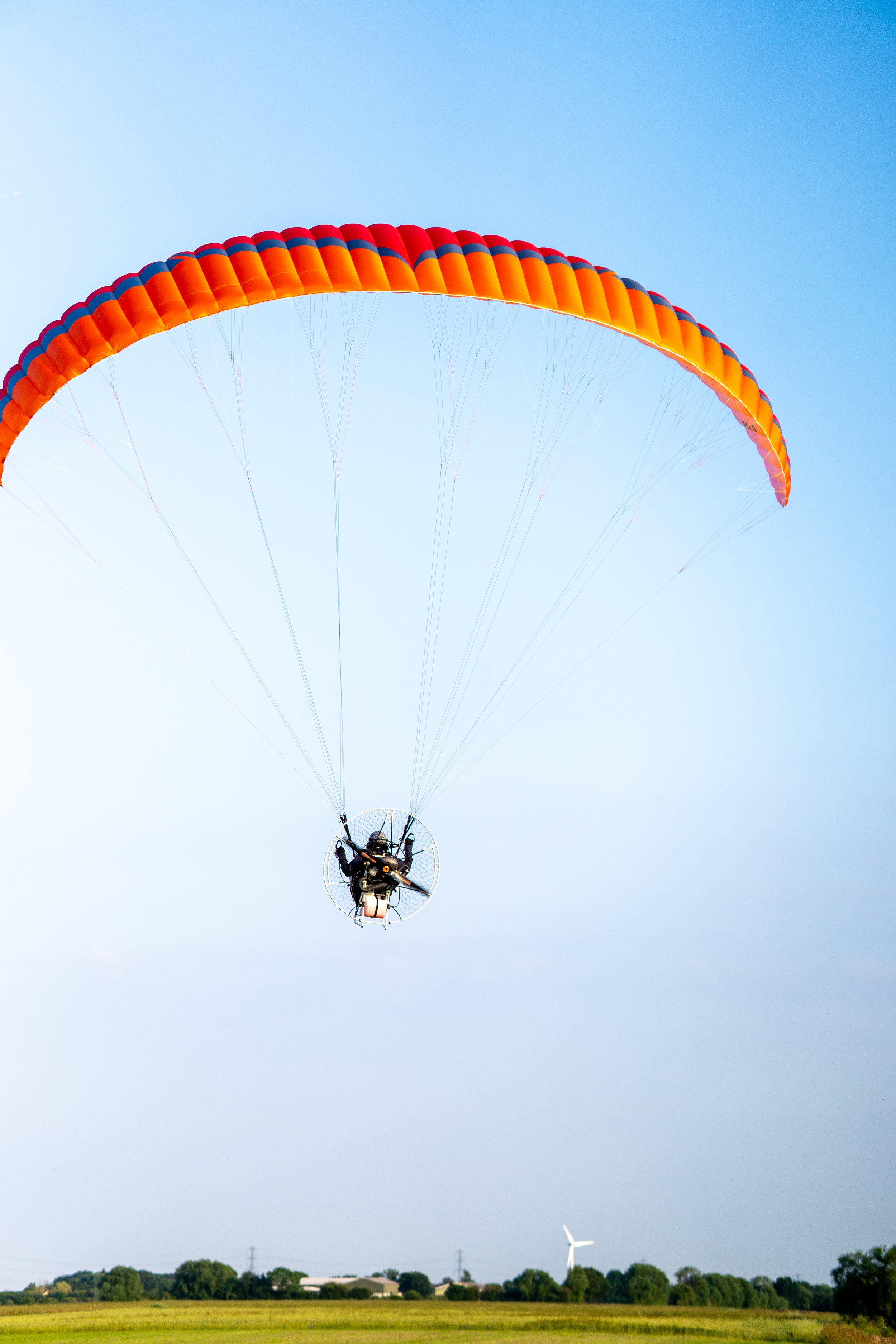
Wing Progression in Paramotoring: A Balanced Approach to Upgrading Equipment
Share
In the ever-evolving world of paramotoring, there's a noticeable trend of pilots upgrading their equipment, particularly wings, at an increasingly rapid pace. While progress and innovation are essential, it's crucial to approach these upgrades thoughtfully to ensure safety and maximize the benefits of new gear.
The Trend of Quick Upgrades
Over the past few years, there's been a resurgence of pilots opting for smaller, higher-end wings. This isn't the first time we've seen such a trend; about seven or eight years ago, pilots similarly gravitated towards the smallest wings available, only for the trend to slow down eventually as people shifted back to larger wings. Today, the cycle seems to be repeating. While it's commendable to see pilots pushing their limits and advancing their skills, there's a risk that some may be rushing into upgrades without fully considering the implications.

Evaluating the Need for an Upgrade
Before deciding to upgrade your wing, it's essential to ask yourself why you feel the need to do so. Are you upgrading because your current wing is genuinely limiting your performance, or is it simply because you don't want to be left behind while your peers sport newer models? The key is to ensure that you're ready for the upgrade and not just succumbing to peer pressure or the allure of the latest technology.
Maximising Your Current Wing's Potential
Many pilots seek faster wings for better cross-country (XC) performance, yet they haven't fully utilized the potential of their current wings. For instance, using the speed bar effectively can significantly enhance your current wing's performance. Properly setting up and using the speed bar can be less intimidating than it seems and can offer a substantial boost in speed and efficiency.
Taking Time to Develop Skills
It's important to spend ample time getting to know your current wing and developing your skills. Challenge yourself with longer XCs and really push the limits of your current equipment. This experience is invaluable and ensures that when you do upgrade, you have the skills to handle the new wing confidently.
The Variety of Wings Available
Today, pilots are fortunate to have a wide range of wings to choose from, catering to various skill levels and flying styles. Unlike a decade ago, where the options were limited to beginner and advanced wings, there's now a spectrum of models available. This variety can help pilots make more gradual upgrades rather than jumping several stages ahead, which can sometimes be overwhelming and risky.

Test Flying New Wings
Before committing to a new wing, test fly it. Everyone has different preferences and what works for one pilot might not work for another. For instance, some pilots prefer the feel of Ozone wings, while others might favor the characteristics of Dudek wings. Both manufacturers produce excellent wings, but they cater to different flying styles. Therefore, experiencing the wing firsthand is crucial in making an informed decision.
Wing Loading and Downsizing
When upgrading, consider the wing loading and avoid the temptation to downsize immediately. A smaller wing can be more dynamic and potentially more challenging to handle. The performance of a smaller wing can be significantly different, particularly in terms of how it handles turns and loses altitude. Thus, it's advisable to upgrade to a higher-performance wing without necessarily reducing the size right away.
The Importance of a Balanced Approach
Remember, progression in paramotoring is not a race. It's about enjoying the journey, safely developing your skills, and making informed decisions about your equipment. By taking a measured approach to upgrading, you ensure that you continue to enjoy flying without unnecessary risks.
Final Thoughts
We hope this discussion offers some valuable insights into the process of upgrading your wing. Taking a balanced and thoughtful approach to wing progression will help you enhance your flying experience safely and effectively. Keep challenging yourself, but do so with a clear understanding of your current capabilities and the potential impacts of new equipment.
See you in the skies!
